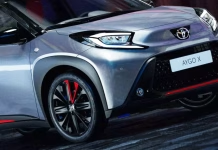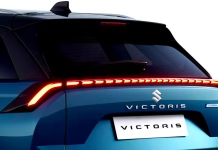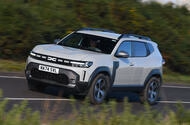Toyota Powers Up European EV Future with Major Czech Factory Expansion
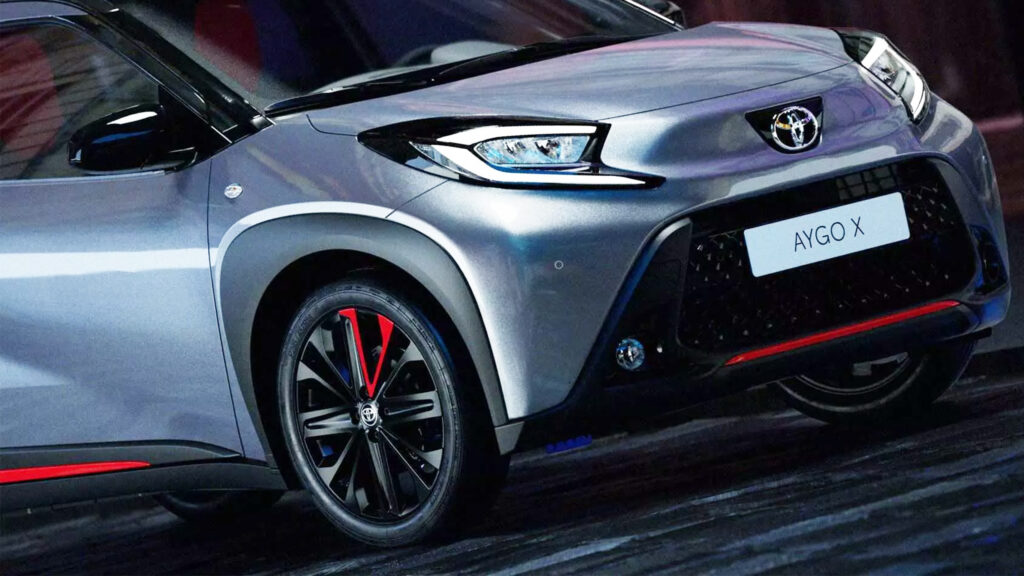
Jay Leno’s Fight to Protect California Car Collectors Hits a Roadblock

Maruti Suzuki Victoris Debuts as India’s Most Advanced Flagship SUV with Hybrid Power and...
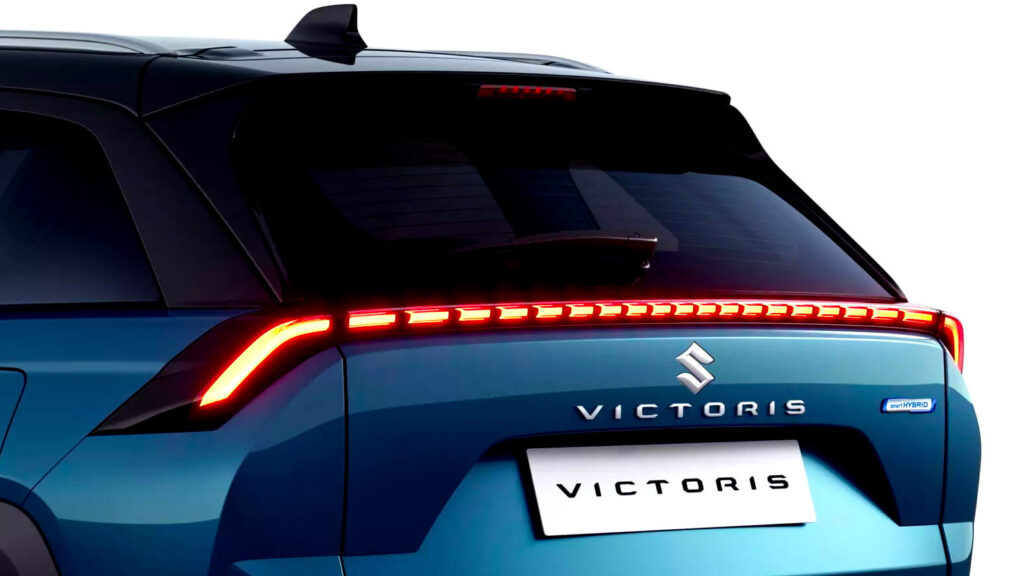
Porsche Cayenne Electric Unveils Game Changing Wireless Charging Pad for Effortless Power
 New system will allow new electric SUV to charge without plugging in – but it won't be cheap
New system will allow new electric SUV to charge without plugging in – but it won't be cheap
The Porsche Cayenne Electric will be offered with a wireless charging pad, claimed to be the first manufacturer-supported inductive charging solution on the market.
Officially named Porsche Wireless Charger (PWC), it offers speeds up to 11kW and works in temperatures ranging from -40 to 50deg C. Porsche claims it's unaffected by debris such as leaves or snow. The pad operates at around 90% efficiency.
The pad is straightforward to initiate. When driving towards it, the car's digital display cuts to gridlines overlaid on a feed from a forward-facing camera, to help the driver line up with the pad, drive over it and park in just the right place.
The Cayenne’s air suspension then lowers the body a few centimetres, a magnetic field fires up beneath it and the invisible transfer of electrons into the battery begins.

You can’t embed the 60mm-tall, 50kg pad into the floor of a driveway or garage for total integration, as this would involve obscuring the sensors that help guide the car onto the pad. It is however completely self-sufficient, as no wallbox is required.
All UK-spec Cayenne EVs will be prepared with the necessary wiring and hoses to accept the 15kg, water-cooled charge receptor that is bolted behind the protective underbody cladding at the front of the car – but the unit itself will be an option, costing around £2000. The pad costs an additional £3000.
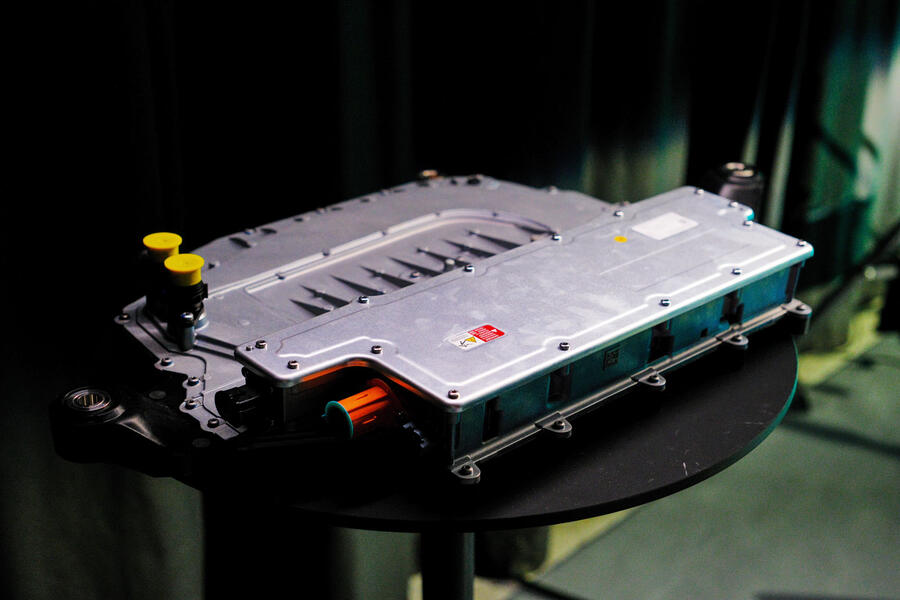
Moreover, if a quicker-charging system becomes available in the future, software alone won't be enough to realise that improved rate, said Porsche, so newer hardware would be required.
Safety systems are integrated into the pad. For example, if the neighbours’ cat is drawn to the heat of the pad, its foreign object detection system will cut the magnetic charge field. When the cat moves, the charging will recommence.
The system is also equipped with an LTE and wireless LAN module, so it can be controlled via the My Porsche app. Similar to a wallbox, charging can be started and stopped manually or set for activity at off-peak times, and preconditioning is possible.
The PWC will become available next year, when the Cayenne Electric goes on sale with circa-400kW cabled charging speeds and, in top-spec Turbo form, around 1000bhp.
Electric Cayenne Unveils Hands-Free Charging and Dazzling Color-Changing Paint

Porsche Cayenne EV Unveils Fast Wireless Home Charging Option
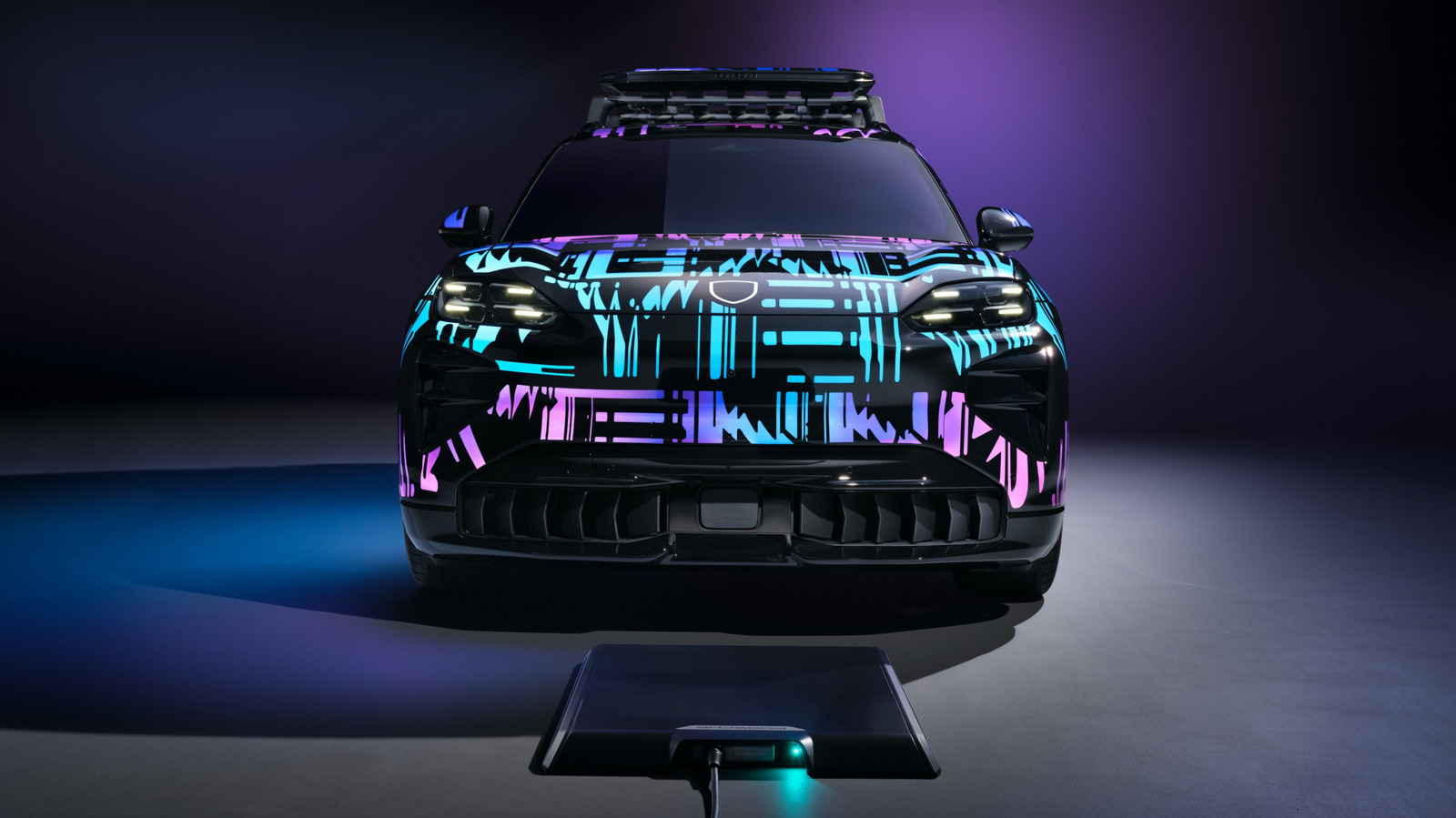
Dacia Duster Upgrades Power and Efficiency with New Hybrid Engines and Fresh Features
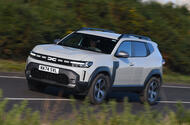 SUV’s mild-hybrid and full-hybrid powertrains are updated with new engines, boosting performance
SUV’s mild-hybrid and full-hybrid powertrains are updated with new engines, boosting performance
The Dacia Duster has been given two new and more powerful powertrain options.
The middle-rung 128bhp mild-hybrid has been boosted by 10bhp, thanks to a new iteration of its 1.2-litre turbocharged three-cylinder petrol engine.
This should slightly improve the car’s 0-62mph dash time of 9.9sec, while fuel economy remains the same at 52mpg. CO2 emissions are up by 1g/km to 122g/km. It retains its six-speed manual gearbox.
The range-topping 138bhp hybrid, meanwhile, has received a new 153bhp system that comprises a 109bhp four-cylinder petrol engine, a 49bhp electric motor, a starter-generator and a 1.4kWh battery pack, 0.2kWh larger than previously.
It achieves the same 58mpg as before but CO2 emissions are down by 7g/km to 105g/km.
Dacia has also introduced new interior upholstery for the Duster’s Journey trim level, as well as black 18in alloy wheels for Extreme trim.
Furthermore, Journey and Extreme models are now fitted with adaptive cruise control as standard.
Dacia has yet to publish pricing for the new Duster models but, given the upgrades, it is expected to rise slightly. For reference, the mild hybrid currently starts at £21,820, while the full hybrid starts at £24,830.
Order books for the updated Duster will open in November.
The Mk3 Duster has been a “phenomenal success” for Dacia, UK brand director Luke Broad told Autocar earlier this year. He said: “The reception to the car has been phenomenal. Deliveries have shot up 22%. We’ve had to manage the volume of inquiries we were sending to dealers, because we didn’t want to overwhelm them with demand. It’s an unusual problem to have, but it’s a good problem to have.”
EV Owner Ticketed for Loud Exhaust on a Silent Dodge Charger Sparks Debate
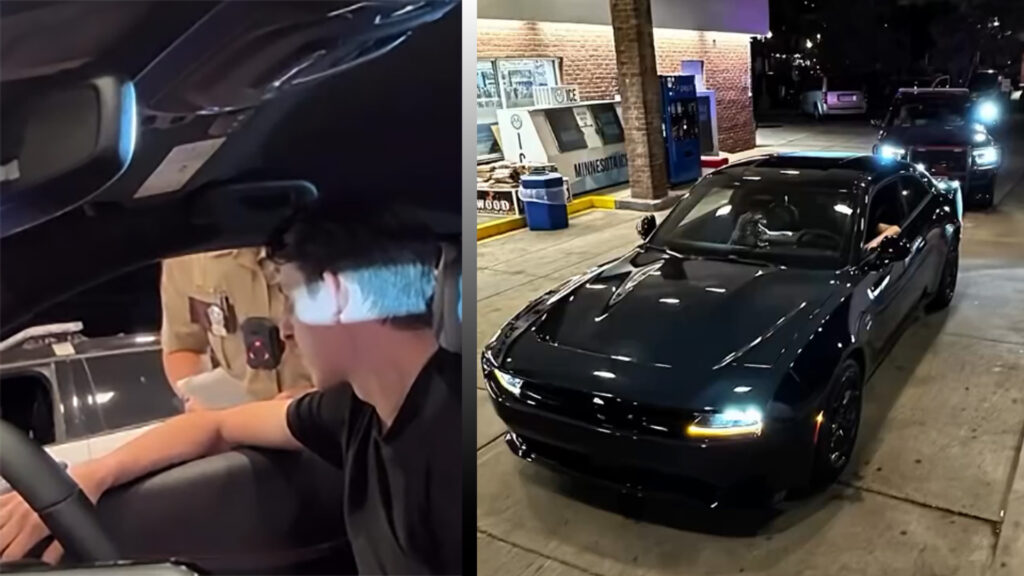
Why Legacy Automakers Must Prioritize Innovation to Stay Competitive in the EV Market

Porsche Breaks Tradition with Front-Drive M1 SUV to Replace Macan Amid Shifting Market Demands
 New junior SUV will fill the gap left by the outgoing combustion-engined Macan
New junior SUV will fill the gap left by the outgoing combustion-engined Macan
Porsche is set to break with 94 years of tradition in 2028 when it launches a replacement for the combustion-engined Macan, which will be its first production car with drive biased towards the front wheels.
The new SUV, known as M1 within Porsche circles, is a successor to the ICE Macan, which was pulled from sale in mainland Europe in July 2024 after it failed to meet new cybersecurity rules. Production of the model for other global markets, including the UK, will end next summer.
The M1 will be twinned with the third-generation Audi Q5 and sit on the Premium Platform Combustion (PPC) architecture of the pair’s Volkswagen Group parent.
It will also adopt the similarly sized Q5’s Quattro Ultra drive system. But instead of heavily re-engineering it to offer a rear-biased four-wheel drive system – as Porsche did with the first Macan – it will instead be used largely unmodified for cost reasons.
So, unlike the outgoing ICE Macan’s Porsche Traction Management set-up, which is engineered to send most of its power to the rear wheels, drive in the M1 will primarily be sent to the front axle, with the rear wheels engaging only when sensors detect impending traction loss, marking a radical shift in Porsche’s engineering philosophy.
The SUV will form part of the company’s bid to counter stalling sales and profits. The Q5 tie-up will help the new five-seater to be fast-tracked through development in response to weaker than expected demand for the electric Macan (25,884 global sales in the first half of 2025) and a general softening in the global uptake of electric cars.
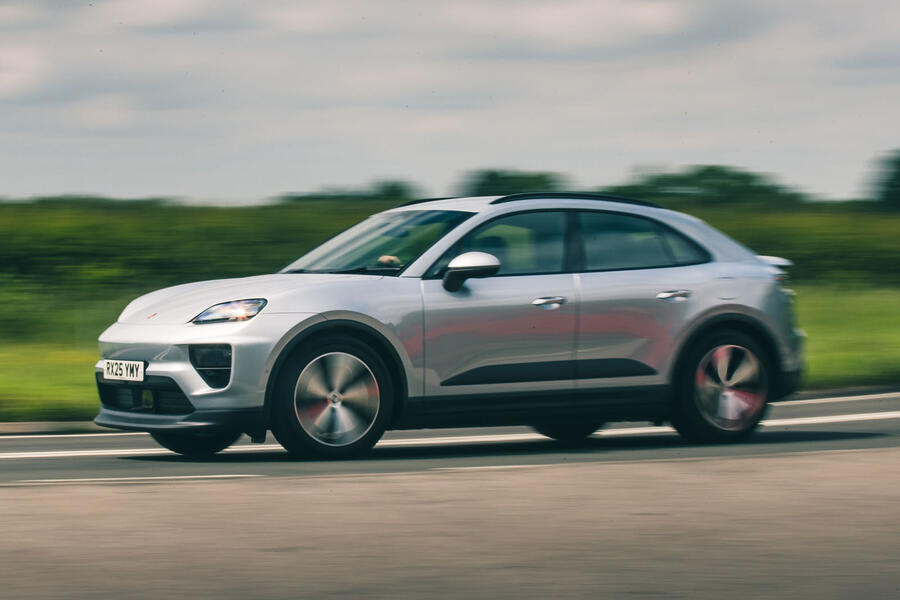
Although the M1 is intended to occupy a similar market position to the first-generation Macan, it won’t be offered with an electric option. That space will continue to be filled by the Macan EV, which was launched last year.
The comprehensive rethink of Porsche’s future model line-up has been triggered by current market conditions, well-placed sources within the company have told Autocar.
Originally, Porsche had aimed to make 80% of its global sales electric by 2030. The Macan – which has long been its second-best-selling model, after the Cayenne – was earmarked to spearhead this EV push and Porsche made the second-generation version electric-only.
At the time, Porsche ruled out a combustion Macan successor, citing the prohibitive cost of developing two distinct versions. But amid a 67% year-on-year fall in pre-tax profits in the first half of 2025, a sharp 28% drop in China and rising US tariffs on European car imports, Porsche has elected to replace the combustion Macan with a new model instead.
Porsche CEO Oliver Blume confirmed the programme in July, describing the new SUV as a “very, very typical Porsche for this segment” and stressing that it will be “differentiated from the [electric] Macan”. He also noted that the M1’s short, three-year development was “speeding up the process” of bringing it to market. A new Porsche typically takes five years from concept to road.
To hit that deadline, the new model will lean heavily on the Q5. Sources say Porsche managers have already seen early design concepts, which outline an SUV with petrol power and mild-hybrid assistance, and a four-wheel drive system biased to the front axle. Plug-in hybrid and diesel variants are not planned.
The entry-level Q5 offers clues as to what to expect. It is powered by the group’s 2.0-litre hybrid turbo petrol four, producing 201bhp and 251lb ft, and drives through a seven-speed dual-clutch gearbox. Audi claims 0-62mph in 8.6sec and a 140mph top speed.
In time, a broader line-up of performance variants – badged S, GTS and Turbo – are expected to be offered. Higher-powered engines and adaptive chassis tuning are claimed to be under consideration.
A production location for Porsche’s new BMW X3 and Mercedes-Benz GLC rival has not yet been confirmed, although two sites are said to be under review. One is Audi’s San José Chiapa plant in Mexico, where the Q5 is built. The other is Porsche’s plant in Leipzig, Germany, which builds the ICE Macan.
Why Porsche is going for front-biased 4WD
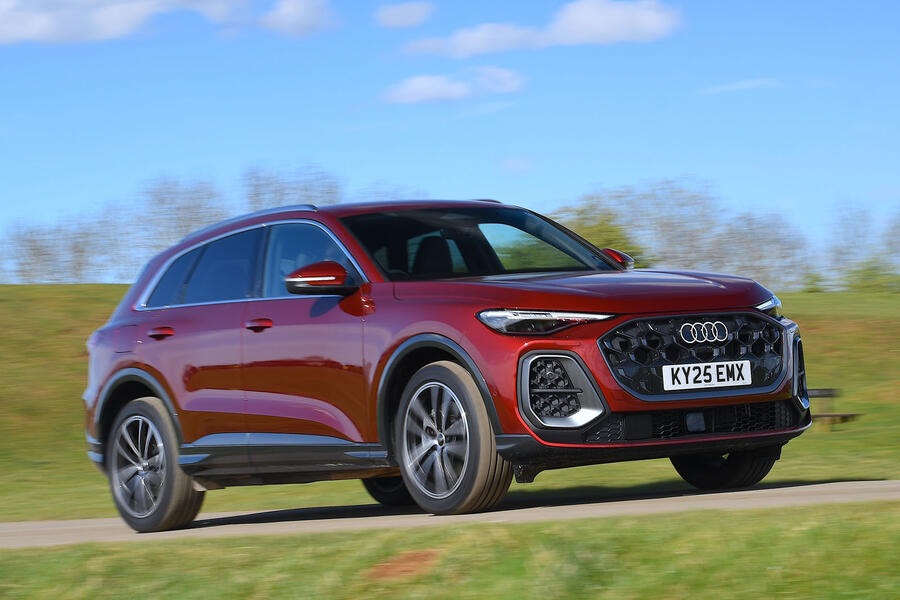
For a company so deeply rooted in the philosophy of rear-wheel drive – hence the rear-axle bias to its four-wheel drive systems to date – Porsche’s decision to build its first production car with a front-drive bias marks a fundamental break with tradition.
Since its founding in 1931, it has engineered its road cars to channel power to the rear axle, either exclusively or primarily, in the pursuit of handling precision.
Even in shared-platform models like the original Macan, Porsche went to great lengths to rework the Audi Q5’s MLB architecture, introducing its own four-wheel drive system and suspension tuning. So why the shift now?
Partly, it’s a matter of cost, bringing development efficiencies when aligned with Volkswagen Group platforms, such as PPC. In short, it will enable Porsche to develop its new entry-level SUV more quickly at a lower cost.
But market realities are an important factor too. In Porsche’s two largest markets, the US and China, buyers are becoming less concerned with performance and handling and more focused on space and comfort.
Add to that the increasing pressure of ever-tightening emissions regulations and the case for a front-biased 4WD system on its entry-level SUV is more compelling.

